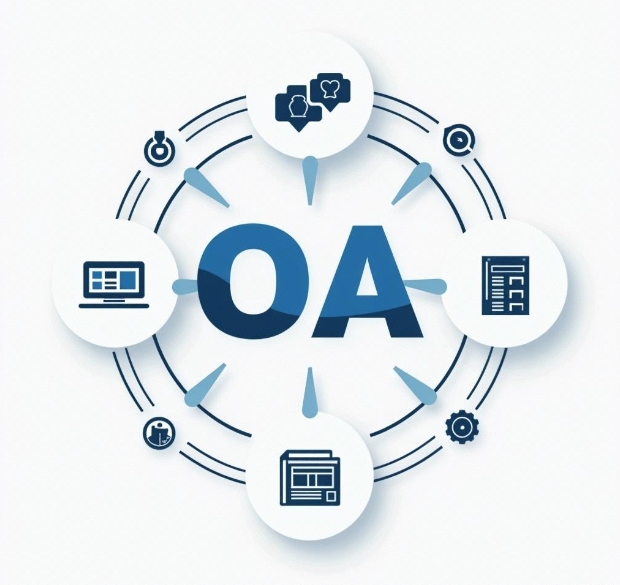OA Collaborative Office System: The Management Core in the Era of Efficient Collaboration
- latest articles
- 1.DApp Development & Customization: Merging Diverse Market Needs with User Experience 2.Analysis of the Core Technical System in DApp Project Development 3.How to achieve cross-chain interoperability in Web3 projects? 4.How does the tokenization of points reconstruct the e-commerce ecosystem? 5.How to Set and Track Data Metrics for a Points Mall? 6.What is DApp Development? Core Concepts and Technical Analysis 7.Inventory of commonly used Web3 development tools and usage tips 8.Development of a Distribution System Integrated with Social E-commerce 9.Six Key Steps for Businesses to Build a Points Mall System 10.What is DApp Development? A Comprehensive Guide from Concept to Implementation
- Popular Articles
- 1.Future Trends and Technology Predictions for APP Development in 2025 2.Analysis of the DeFi Ecosystem: How Developers Can Participate in Decentralized Finance Innovation 3.From Zero to One: How PI Mall Revolutionizes the Traditional E-commerce Model 4.DAPP Development | Best Practices for Professional Customization and Rapid Launch 5.Recommended by the Web3 developer community: the most noteworthy forums and resources 6.From Cloud Computing to Computing Power Leasing: Building a Flexible and Scalable Computing Resource Platform 7.Shared Bike System APP: The Convenient Choice in the Era of Smart Travel 8.How to Develop a Successful Douyin Mini Program: Technical Architecture and Best Practices 9.How to Create a Successful Dating App: From Needs Analysis to User Experience Design 10.From Design to Development: The Complete Process of Bringing an APP Idea to Life
In modern enterprise management, efficient collaboration has become a key point for various organizations to enhance competitiveness and internal operational efficiency. With the acceleration of digital transformation, the demand for management tools has evolved from simple, single-function office software to comprehensive solutions that fully support team collaboration and business processes. The OA (Office Automation) collaborative office system has emerged as the core management tool in this era.
This article will delve into the definition, functions, advantages of the OA collaborative office system, and how it helps enterprises achieve efficient collaboration.
I. What is an OA Collaborative Office System?
An OA collaborative office system is a comprehensive management platform supported by information technology, integrating office automation and collaborative functions. Unlike traditional office tools, the OA system centers on workflow, achieving comprehensive management and seamless integration of personnel, resources, and processes within the enterprise through a unified portal platform.
The core features of this system include:
1. Information Sharing and Transmission: Enables efficient sharing and precise transmission of important information within the enterprise, breaking down information silos.
2. Automated Process Management: Optimizes business processes through workflow design, improving approval and execution efficiency.
3. Cross-Departmental Collaboration: Supports real-time collaboration among multiple departments and roles, enhancing team communication and cooperation capabilities.
II. Main Functions of the OA Collaborative Office System
The functions of an OA system vary by industry and specific needs, but core functions generally cover the following aspects:
1. Workflow Management
Workflow is one of the foundational modules of an OA system, supporting user-defined approval processes such as contract approvals, expense reimbursements, and leave management. This function not only simplifies traditional offline approval processes but also significantly enhances work efficiency through automated reminders and tracking features.
2. File Management and Sharing
The file management function helps enterprises establish a unified electronic document library, supporting file categorization, permission management, and version control. Employees can access and share files anytime, anywhere, avoiding redundant work and resource waste caused by scattered information.
3. Schedule and Task Management
The OA system helps employees arrange and track personal and team schedules, achieving work transparency through task assignment and progress management functions, ensuring every member can follow up and complete assigned tasks promptly.
4. Instant Messaging and Announcement Publishing
Built-in instant messaging supports various forms of communication such as text, voice, and video, facilitating quick communication and decision-making among employees. Meanwhile, the announcement publishing function provides a unified notification channel for enterprises to convey important matters or company news.
5. Data Statistics and Analysis
The OA system can generate intuitive statistical reports by integrating workflow and business data, providing a basis for management decision-making.

III. Core Advantages of the OA Collaborative Office System
1. Enhancing Collaboration Efficiency
By integrating multiple office functions, the OA system consolidates previously scattered operations into a single platform. Whether it's file sharing, task assignment, or information transmission, all operations are completed on the same platform, significantly reducing communication and execution time.
2. Optimizing Business Processes
Traditional enterprises often face issues like long approval cycles and slow information flow. The OA system addresses these by automating and visualizing processes, breaking down complex workflows into clear steps, making approvals more efficient and transparent.
3. Strengthening Information Security
Compared to traditional paper-based office methods, the OA system ensures the security of enterprise information during storage and transmission through permission controls, data encryption, and backup mechanisms.
4. Supporting Remote Work
With the rise of remote work trends, the OA system, through cloud deployment and mobile support, helps employees complete tasks anytime, anywhere, meeting the flexible work needs of enterprises.
IV. How the OA Collaborative Office System Facilitates Efficient Collaboration
1. Creating a Seamless Collaboration Environment
By integrating various enterprise resources into a single platform, the OA system makes collaboration among employees more convenient. For example, a project leader can assign tasks, share materials, and monitor progress in real-time on the platform without repeatedly switching between multiple tools.
2. Promoting Corporate Culture Building
Through the announcement, news, and forum modules of the OA system, enterprises can regularly share cultural concepts and team achievements, enhancing employees' sense of belonging to the organization, thereby improving collaboration efficiency and work motivation.
3. Enabling Data-Driven Decision Making
The OA system aggregates various business data and, through intelligent analysis, helps managers identify operational bottlenecks and optimization opportunities, thus formulating more scientific collaboration strategies.

V. OA System Application Cases
The following are several typical application cases of the OA system in real-world scenarios:
Case One: Small and Medium-Sized Enterprises Improving Approval Efficiency
After adopting an OA system, a growing tech company reduced its contract approval process from three days to one day. Process automation minimized repeated communication between departments, enhancing the efficiency of contract signing.
Case Two: Large Enterprises Achieving Cross-Regional Collaboration
An international manufacturing company with branches worldwide used the OA system's cloud collaboration features to allow project team members to share the latest design documents and production data in real-time, enabling efficient task completion even from different countries.
VI. Future Development Trends of OA Collaborative Office Systems
With continuous technological advancements, OA systems are also evolving, primarily showing the following trends:
1. AI Empowerment
Through the introduction of artificial intelligence, OA systems will achieve intelligent task allocation, data prediction, and work reminders, allowing employees to focus on more creative work.
2. Deep Customization
Future OA systems will place greater emphasis on deep alignment with enterprise needs, supporting on-demand selection and customization of functions through modular design.
3. Cross-Platform Integration
With increasing diverse office needs, OA systems will further integrate functions with other enterprise software, such as ERP and CRM systems, forming a unified management platform.
VII. Conclusion
In the wave of informatization and digital transformation, the OA collaborative office system, with its powerful functions of efficient collaboration, process optimization, and information integration, has become a core tool in modern enterprise management. Whether for small businesses or large organizations, deploying an OA system can enhance operational efficiency, optimize resource allocation, and thus remain invincible in the fierce market competition.
With the help of the OA collaborative office system, we are moving towards a smarter and more efficient era of office work.
-

How to Use App Development to Boost Conversion Rates on E-commerce Platforms
With the widespread adoption of smartphones and the rapid development of mobile ···
-

How APP Development Facilitates Digital Transformation and Innovation
With the rapid advancement of information technology, digital transformation has···
-

App Store Optimization and SEO Strategies in App Development
In today's rapidly evolving mobile internet landscape, apps have become essentia···

 Blockchain
Blockchain










